A DOSSIER UPON SELF-DEFENCE BY ILENIA COSTANZA, ROME
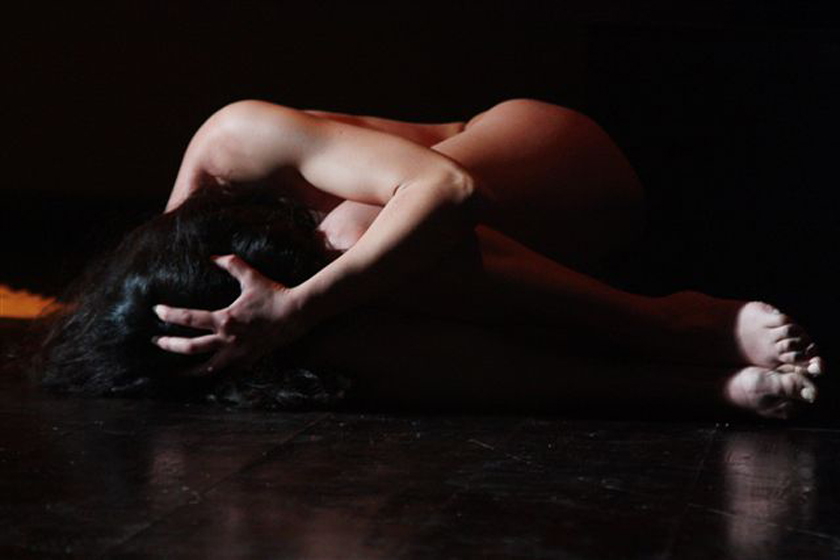
A Dossier upon Self-defence
Piece written and directed by
Ilenia Costanza
Artistic cultural Association I VETRI BLU
Mercati di Traiano – Museo dei Fori Imperiali, Rome
8-9 January 2011
Text by Roberta d’Errico
The performance Self-defence by Ilenia Costanza– author and director – has been promoted and realized by Prime Ministership, Department for the Equal Opportunities, National Opening on 8 march 2010 at Quirino’s in Rome.
Its revival has been enacted in the order of the events organized by ZETEMA Progetto Cultura for Rome Città Natale (Cultural Project for Rome birthday) inside the picturesque place offered by the Great Hall of Mercati di Traiano (Traiano Markets) – Museo dei Fori Imperiali (Fori Imperiali Museum) on 8 and 9 January 2011.
The topic is that of the violence to the women. A relevant point to remind is the etymology of the terms violent and to violate just in order to observe that the logical construction of the language refers to this instinct: violate from the same root of vis, strength, violence, to offend, to hurt, to abuse, to profane, to corrupt the integrity and the purity or the chastity of anybody; violent from Latin violentus or violentem therefore violentia, from vis, force, power, arrogance. From here also the origin of the word to rape and i.e. to force something open , to break, to force in such a way that it is impossible to resist, to withstand.
The several undertones of meaning that we can recollect to define the violence against the women are Violation, profanation, the act of arrogance, to corrupt, to contaminate, to spoil, to ruin.
The violence against the women presumes the archetypal assumption that expects the women to be inferior and weed.
The performance of Ilenia Costanza meditates on such a point.
When the lights are switched off we are enveloped into the warm and wise voice of Oriana Fallaci. She is talking to the life inside of her. She asks herself whether it will be male or female, listing the reasons why this or that account would be better than the other one, from then on she speaks of the whole Person.
In the meantime a statuesque Pamela Prati arrives on the stage: a wooden platform in its essentiality and placement reminds of mystery play or Commedia dell’Arte. In such a structural and time exoticism the great and large arcades of the Trajanic see create a charming and surrounding ensemble.
The actress Pamela Prati walks slowly and kindly because she holds a child in her lap wrapped in a bed cover. The actress undoes the cover and we realized the cover was a container, a case: It is so a new life pure as the white can be, and invisible to welcome the spontaneous and natural love, free from cultural prejudices.
Some young actress play a feminine role on the stage telling of their sorrow. Fourteen stories of women that from East to West are prey to violence imputable to cultural and religious habits, to the basic needs, to the brutality that the man uncovers when he follows the herd, to the degeneration of the feeling resulting in hate and violence.
“They are dramatic well known faces, names, places, seen briefly at lunch time when watching the news…forgotten. Hina Saleem, 20 years old, killed at Brescia because she was loving an Italian boy; Dalia, Moldavian, sold by her grand mother at the age of 12 y.o. and induced to prostitute herself onboard a ship; Deborah Rizzato, 25 years old, raped, persecuted and killed in the end because she was unaware object of pathological desires; Franca Rame, raped by 4 men and there after left at the park.. and after that the evidences of Mogadishu adolescent girls circumcision, the tortured feet of Chinese little girls, the bosom stretched of Cameroonian women…and all over again the tormenting descriptions of the Eastern baby prostitutes much beloved by Europeans, the White slavery brought to Italy as carers and afterwards dumped in the street, the rapes during the wars…..and more, the children with their head under the sheet in front of mothers teaching them the silence… and women washed out by tyrannical and violent husbands, more often severely beaten and killed” (director’s note). The only surviving woman of this sorrowful listing is Dalia, that renounces to her beauty disfiguring her body and face.
Every time that a story ends, the actress which enacted the role lies down on the stage. At last a row of bodies lie down one close the other like soldiers killed in action. All the women guided by Pamela Prati, unleash a cry of soundless and mimed pain, that’s because they are still unheard, they can have no sound. The character played by Pamela Prati recalls the symbolic role of the great mother, origin and end of all the things; she could want to help these women but the only thing can do is to shed tears with them, sharing their suffering, singing a lullaby.
Towards the end of the performance a screen proposes again the actress made up in such a way that the stories related could be recognized and visualized. A ploy ideated to give to the message of the performance a strength, but perhaps it defeats the evocative power of the word that earlier mesmerized us.
A voice, not that of Oriana Fallaci, warm and wise, but a vapid one, like that reading the news headlines lists the women missing, killed by the violence concealed within the family.
The music of Graziano Mossuto plays full of poetry and lyricism the dramatic rhythm of the performance. His notes fit into words, in the sighs, in the tears supporting the interpretative ability of the individual actress.
Roberta d’Errico
Translated by Salvatore Rollo – at salvatore_rollo@fastwebnet.it
.
Legittima Difesa Dossier
scritto e diretto da
Ilenia Costanza
8-9 gennaio 2011
Associazione Artistico Culturale I VETRI BLU
Mercati di Traiano – Museo dei Fori Imperiali – Rome
Testo di Roberta d’Errico
Lo spettacolo Legittima difesa, scritto e diretto da Ilenia Costanza, è stato promosso e realizzato dal Dipartimento per le Pari Opportunità della Presidenza del Consiglio dei Ministri ed è andato in scena in prima nazionale l’8 marzo 2010 al Teatro Quirino di Roma.
La sua riproposizione è avvenuta nell’ambito degli eventi organizzati da ZETEMA Progetto Cultura per ROMA CITTA’ NATALE nel suggestivo scenario offerto dalla Grande Aula dei Mercati di Traiano – Museo dei Fori Imperiali l’8 e il 9 gennaio 2011.
Il tema affrontato è quello della violenza sulle donne. E’ pertinente ricordare l’etimologia dei termini violento e violare per osservare come la lingua, nella sua logica costruzione, nomina questo istinto: “violare” dalla stessa radice di vis, forza, violenza, trattare violentemente, guastare usando la forza quindi offendere, oltraggiare, profanare, contaminare l’integrità e la purezza di chicchessia; “violento”, dal latino violentus o violentem onde violentia, da vis, forza, vigore, possanza, prepotenza. Da qui anche la derivazione di “violentare” e cioè fare forza in maniera che sia impossibile resistervi.
Nell’universo di sfumature di significati, le definizioni che più riecheggiano nella mente, in relazione alla violenza sulle donne, sono profanazione, prepotenza, purezza contaminata.
La violenza sulle donne si inserisce in un archetipico assunto che vuole la donna inferiore e debole. Ed è proprio su questo aspetto che riflette lo spettacolo di Ilenia Costanza.
Quando le luci si spengono, siamo avvolti da una voce calda e saggia. E’ la voce di Oriana Fallaci che discorre con la vita che è dentro di lei, si chiede se sarà femmina o maschio, elencando i motivi di bellezza dell’uno e dell’altro caso, per poi parlare della bellezza di essere Persona.
Nel frattempo, una statuaria Pamela Prati giunge sul palcoscenico: una piattaforma di legno che nella sua essenzialità e nella sua collocazione riecheggia quella dei misteri medievali o della Commedia dell’Arte. In questo esotismo strutturale e temporale le ampie e alte arcate della sede traianea creano un corollario suggestivo e avvolgente.
L’attrice Pamela Prati ha un incedere lento e premuroso perché porta in grembo un bambino avvolto in una coperta. L’attrice apre la coperta e ci accorgiamo che la coperta è un contenitore, un involucro: è così una nuova vita, pura come il bianco, e invisibile per accogliere l’amore spontaneo e naturale, scevro da pregiudizi culturali.
Sul palcoscenico delle giovani attrici interpretano personaggi femminili che hanno un dolore da raccontare. Quattordici storie di donne che, dall’Oriente all’Occidente, sono vittime di violenze ascrivibili ad abitudini culturali e religiose, al bisogno economico, alla bestialità che l’uomo scopre quando si ritrova in branco, alla degenerazione di un sentimento che sfocia in odio e aggressività.
“Sono volti, nomi, luoghi drammaticamente noti, visti di sfuggita nei telegiornali all’ora di pranzo…dimenticati. Hina Saleem, 20 anni, uccisa a Brescia per aver amato un ragazzo italiano; Dalia, moldava, venduta dalla nonna a 12 anni e portata su una nave come prostituta; Deborah Rizzato, 25 anni, violentata, perseguitata e infine assassinata per essere stata inconsapevole oggetto di morbosi desideri; Franca Rame, stuprata da 4 uomini e poi abbandonata al parco…e poi le testimonianze dei riti della circoncisione delle adolescenti del Mogadiscio, i piedi torturati delle bambine cinesi, i seni stirati delle donne del Camerun…e ancora gli struggenti racconti delle baby prostitute orientali tanto care agli uomini bianchi, la tratta delle bianche portate in Italia come badanti e poi gettate in strada, gli stupri durante le guerre…e ancora, le bambine con la testa sotto le lenzuola davanti a madri che insegnano loro il silenzio…e donne sfinite da mariti dispotici e aggressivi, picchiate a sangue…sovente uccise” [note di regia]. L’unica donna sopravvissuta di questo triste elenco è Dalia, che rinuncia alla sua bellezza deturpando il proprio corpo e il proprio volto.
Ogni volta che una storia finisce l’attrice che l’ha interpretata si stende supina sul palcoscenico. Alla fine, una schiera di corpi, in fila, giacciono gli uni accanto agli altri, come soldati di guerra caduti in un combattimento. Le donne, insieme, guidate da Pamela Prati, danno sfogo ad un grido silenzioso, mimato, un grido di dolore che, poiché ancora inascoltato, non può avere suono. Il personaggio interpretato da Pamela Prati evoca il ruolo simbolico della grande madre, origine e fine di tutte le cose; vorrebbe poter aiutare queste donne, ma l’unica cosa che può fare è piangere con loro, condividendone la sofferenza, cantando una ninna nanna.
Verso la fine della rappresentazione uno schermo ripropone le attrici truccate in modo tale da riconoscere e visualizzare le storie che hanno raccontato. Un escamotage ideato per dare forza al messaggio della rappresentazione, ma che forse annulla la potenza evocativa della parola che prima ci aveva ipnotizzati.
A chiudere lo spettacolo una voce, non più quella calda e saggia di Oriana Fallaci, ma asettica, da titoli di telegiornale, elenca i nomi di donne che non ci sono più, uccise dalla violenza che si nasconde nelle mura domestiche.
Nel ritmo drammatico creato dal testo dello spettacolo si snoda con poesia e lirismo la musica di Graziano Mossuto. Le sue note si inseriscono nelle parole, nei sospiri, nelle lacrime sostenendo il potere interpretativo delle singole attrici.
Roberta d’Errico

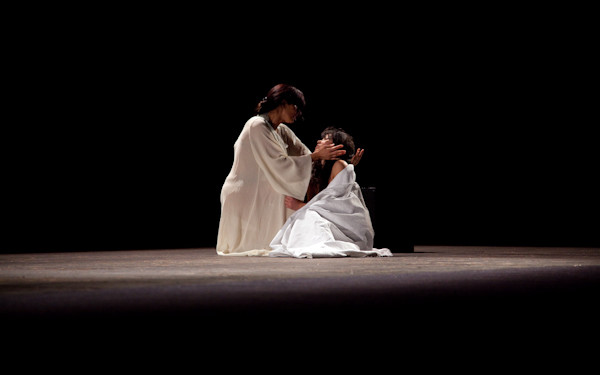
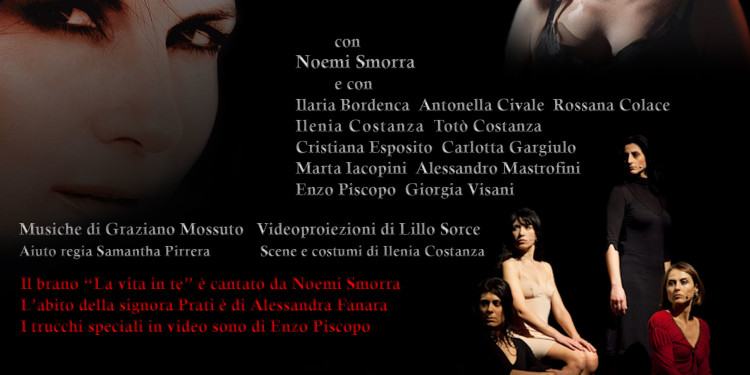
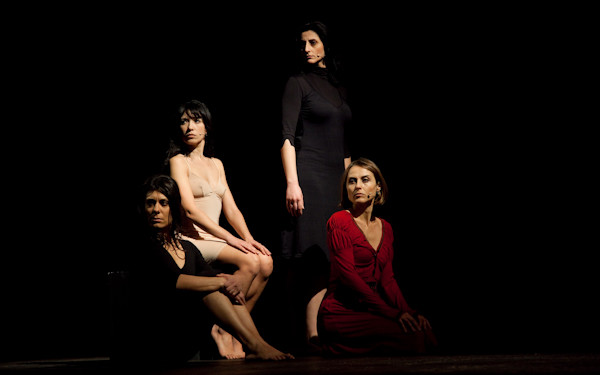
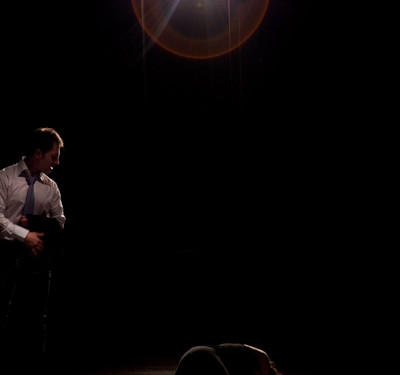
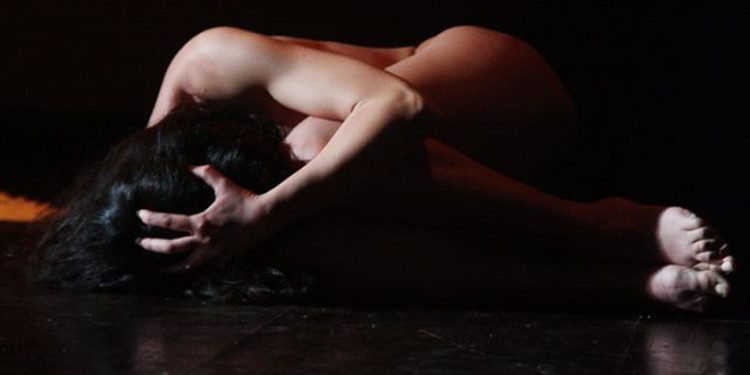





No Comment